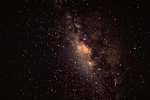Ke Fang, professor at the University of Wisconsin–Madison, has been selected as the recipient of the 2021 Shakti P. Duggal Award presented by the International Union of Pure and Applied Physics (IUPAP).
The highest-energy cosmic rays come from subatomic interactions within star clusters, not supernovae, say Michigan Tech physicists and collaborators, including WIPAC's Ke Fang.
On January 1, astroparticle physicist Ke Fang joined WIPAC and the UW–Madison Physics Department as an assistant professor. To welcome Fang and learn more about her, we met up on Zoom for an interview.
In an attempt to better understand the anisotropy, the IceCube Neutrino Observatory and the HAWC gamma-ray observatory have united their efforts to study cosmic-ray arrival directions in both hemispheres at the same primary energy. The goal of this combined observation was to get a nearly full-sky coverage to study the propagation of cosmic rays with median energy of 10 TeV through our local interstellar medium as well as the interactions between interstellar and heliospheric magnetic fields. Results have just been accepted for publication in The Astrophysical Journal and include measurements on how the anisotropy modulations are distributed over different angular scales.
In a new measurement published recently in The Astrophysical Journal, HAWC has looked deeper into the region between 2 and 73 TeV and has also studied the large-scale anisotropy and the energy dependence between both the small- and large-scale features.
For the first time, an international collaboration of scientists has detected extremely high-energy gamma rays, the most powerful type of light, coming from the outermost regions of an unusual star system within our own galaxy. The source is microquasar SS 433, a black hole that gobbles up stuff from a nearby companion star and blasts out powerful jets of material. The team’s observations, described in the October 4 issue of the journal Nature, represent the most energetic radiation ever detected from a microquasar in our galaxy.







